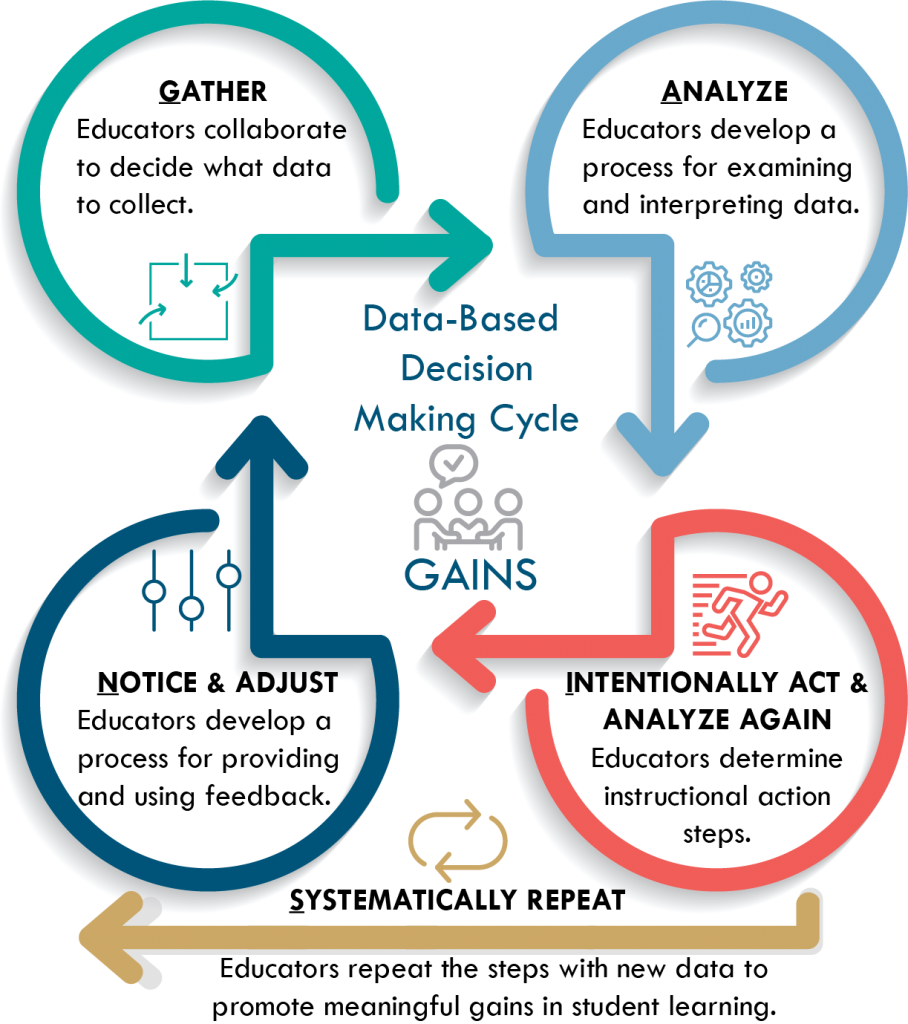IN ACTION
Leading Change
In the video Making Change Work, (New Zealand School Trustees Association, (n.d.)) Randy Pennington discusses strategies for leading change. As you watch this video, consider the five strategies Pennington describes and how they align with previous information from this module.
Understanding Implementation Science
The National Implementation Research Network (NIRN) identified six stages organizations go through when selecting and implementing innovative programs and practices. Successful educational leaders guide and support districts and buildings through the six implementation stages.
Six Stages of Implementation (Fixsen, Naoom, Blase, Friedman & Wallace, 2005).
While sustainability is the last stage of implementation, it does not mean the work is complete. Districts must continue to implement effective practices and make data-driven decisions, all while being ever mindful of the changing dynamics of student enrollment and needs.
Explore implementation stages and drivers, at the Implementation Research Network’s Active Implementation Hub. This website includes online modules for each component of implementation.
1. Exploration & Adoption
The first stage of implementation involves reviewing current strengths and needs.1. Exploration & Adoption
- What do we currently have in place that is effectively supporting student learning and or effective instruction? How do we know our practices are effective?
- What do educators need in order to improve instruction?
- What does our system of professional development (coaching and training) look like? Is this addressing educator needs? How do we know?
2. Program Installation
The second stage involves establishing an environment supportive of implementation.2. Program Installation
- At the district level, what needs to be put in place to support building/district-level implementation?
- What resources, guidance, policies, support, etc. are needed for consistency across the district? Are there unique pockets of needs within the district?
- How can we best address the need for information and establish ownership for implementation?
3. Initial Implementation
During initial implementation, professional development is provided and educators begin implementing the components. During this stage, it is important to monitor these early steps for fidelity and needs for support that emerge.3. Initial Implementation
- Are initial implementation steps proceeding as expected? What needs for resources or support are emerging?
- Which aspects show promise for being effective and which need to be revisited?
- What are the district-level considerations to address prior to full operation?
4. Full Operation
This stage involves taking implementation to scale. At a district level, full operation is implementation of the MMD/DCI framework in all schools.4. Full Operation
- Is fidelity of implementation being met? How do we know? If it is not, what resources and supports are needed to improve implementation with fidelity?
- Which aspects of the framework have proven to be effective and which require revision?
5. Innovation
At this stage data guides innovative modifications, additions, and/or subtractions to the practice. It is importance to refrain from innovation until ample time has been permitted for full operation.5. Innovation
- In what ways can the work and approach be improved?
- What are the implications for the integrity of the work if revisions are made?
- What are the considerations for sustainability? Are there district-level factors to address in order to set the stage for sustaining the work?
6. Sustainability
The ultimate goal is a sustainable model of services and supports that provides a valid, reliable, and evidence-based approach to responding to the educational needs of all of Missouri’s students.6. Sustainability
While this is the last stage of implementation, the work is not complete. Districts must continue to implement effective practices and make data-driven decisions, all while being ever mindful of the changing dynamics of student enrollment and needs.
Explore implementation stages and drivers, at the Implementation Research Network’s Active Implementation Hub. This website includes online modules for each component of implementation.
Sustainability and the G.A.I.N.S. Cycle
Just as the G.A.I.N.S. cycle is used to guide action planning when setting a path for district continuous improvement, this same cycle is used to monitor for sustainability. It is essential that districts utilize this data-based decision making process as they continue to support the work and move forward. Too often, implementation is characterized as plan-do-revise, without considering data to inform the revisions. Through the G.A.I.N.S. cycle, problems and solutions can be identified and barriers to effective implementation reduced. Through this cycle, the implementation steps are planned, enacted, analyzed, and scaled-up. This process assures that data is continuously used to guide decision-making as districts strive to become their best.
| G | Gather data to assess and track implementation progress. |
| A | Analyze data to identify implementation challenges/obstacles and determine changes that would improve district implementation. |
| I | Intentionally act by designing and implementing a plan that would target identified challenges/obstacles. |
| N | Notice and adjust by collecting, analyzing, and utilizing change data to make revisions as needed. |
| S | Systematically repeat the steps using new implementation and scaling up data. |



